 Guest blog by Nancy Tupper Ling Here’s the thing. If we knew all the twists and turns of this writing journey at the start, many of us might opt out early on. It’s definitely not for the faint of heart. Sometimes in the midst of this journey, a leap of faith is required. We might decide to pivot, try a new genre, or join a different critique group. According to the Cambridge Dictionary, a leap of faith is “an act of believing something that is not easily believed.” On this road to publication, we are all taking a hop, a leap, or a gigantic jump in an effort to see our words in a reader’s hands someday. In the case of picture books, we might be praying for beautiful illustrations as well. Recently I took a literal leap of faith . . . toward my faith. It was risky. I’ve always included some aspect of my faith in my books, even if it’s simply the Latin phrase Soli Deo Gloria in my dedication, as composers Johann Sebastian Bach and George Frideric Handel did long ago. Simply put, the “glory goes to God alone.” In the last few years, however, I had a desire to submit anthologies and picture books that were more faith-centric. This meant taking a new road to publication, including joining with agent, Anne Marie O’Farrell, who believed there was a market for these books. Thankfully, she soon met Bunmi, Ishola, an awesome editor from Penguin/WaterBrook, who was in search of manuscripts with God at their heart. Turns out ONE PERFECT PLAN: THE BIBLE'S BIG STORY IN TINY POEMS was a good fit. Of course, none of this happened instantaneously. A lot of side streets were taken on this journey, and soul-searching as well. Certainly, I learned a great deal about myself and my priorities along the way. In case these tips might help you make a leap or two in your own writing career, I offer a few to consider: Heart and Soul If you do nothing else, take time to think about what makes your heart beat, and what stirs your soul. When you think about it, we’re all writing for someone. Who are you picturing reading your future book? What topic or idea won’t let you rest if you don’t write it? The idea for ONE PERFECT PLAN sat in a drawer for a long time. Really, a LONG time (since 2007). Still, the idea kept coming back, giving me a tap on the shoulder. It began with the premise that one event, one promise, or one person can make a huge difference in this world. Plus, I wanted to tell epic Bible stories in short poems so children might memorize them, and also read the entire Bible (its essence) in one sitting. That idea stirred my soul. What stirs yours? 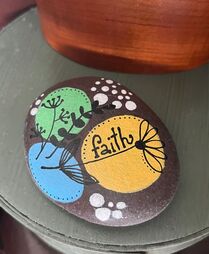 Mentors We hear a lot about reading mentor texts, or finding comparative stories, but who are the authors out in the world whom we admire most? Who’s already taken that leap of faith and is writing those stories that reflect their passion and purpose. For me, it was authors who weave their faith into their stories and their lives, mentors like Nikki Grimes and Mitali Perkins. I’ve also learned that traveling this road with a book buddy or two is key, like Janet Costa Bates and Lynda Mullaly Hunt, to name a few. As long as you’re open to learning more about this field of writing, you’ll surely find a mentor to guide you along the way. Who do you admire? Post-Its & More We all need a word of encouragement, or two or three, in this publishing business. The question is: Who are you listening to? Many times after a number of rejections or revisions, it’s hard to keep on writing. It’s hard not to hear those negative voices. So I’ve taken to posting a lot of sticky notes on my bathroom mirror, in my car, and on my laptop. They are hope-filled. I even leave some for my husband and daughters now and then. Sometimes it’s a Bible verse, like this one: "Now faith is the assurance of things hoped for, the conviction of things not seen" (Hebrews 11:1) Or, it could be as simple as “You’ve Got This!” And you can never go wrong with a Mary Oliver quote like: “I want to think again of dangerous and noble things. I want to be light and frolicsome. I want to be improbable, beautiful and afraid of nothing, as though I had wings.” And when you run out of encouraging words, there are times when a friend gifts you a Kindness Rock with just the right words on it to inspire you. Think about the gifts you’ve received.  Storing Up Treasures Even beyond the inspiring words, I like to collect tangible objects that remind me of my stories. When I look at these treasures, it helps me to feel a sense of reassurance that someday the manuscripts they represent might become books. Long before DOUBLE HAPPINESS was accepted by Chronicle Books, I discovered a sweet pencil box in an antique shop that had the phoenix and the dragon painted on the cover. In Chinese tradition, this represents double happiness (usually at weddings). That box sat on my writing desk for years, reminding me of my dream for that book. Even now, I have one story that has yet to be accepted with a hedgehog character named Phoebe. Trust me, this little fluffy hedgehog gives me hope that Phoebe may grow into something more someday. Sometimes it’s the littlest things that keep us inspired and maintain our faith. Generosity This has been my mantra: “It’s a long journey to publication. Yes, it can take a leap or two of faith, but all along the way practice the art of generosity.” Even now I need to be remind myself of this goal. I’ve become a stronger writer in spite of or because of the mistakes I’ve made along the way, and I want to encourage others that getting a book published is possible. One of my favorite poetry teachers was a quiet, soul-filled man named Donald Sheehan who ran the Frost Festival in Franconia, NH, for many summers. Daily, he reminded the participants that while we might be desiring to break into the world of publishing more than anything in the world, if we’re unable to have a kind and generous spirit along the way, we’re missing the essence of the journey. I couldn’t agree more. So, take heart, and practice some soul-searching. You may discover a sharp pivot is in your future, and it might be the very best move you will make for your writing career. Certainly, I thought this publishing journey would go a lot smoother and faster, but it gave me time to become brave enough to pursue a book that showcased a faith that’s important to me. Cultivate the art, but keep your eyes wide open for the gifts you’ve received already: In Mary Oliver’s words, “Sometimes I need only to stand wherever I am to be blessed.” 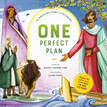 Nancy Tupper Ling is a children’s author, poet, book seller, and librarian. ONE PERFECT PLAN: THE BIBLE'S BIG STORY IN TINY POEMS (WaterBrook, 2023) is her 6th picture book, with two more on the way in 2024 including BLESS THE EARTH: A COLLECTION OF POETRY FOR CHILDREN TO CELEBRATE AND CARE FOR OUR WORLD (The Crown Publishing Group, 2024) which includes 24 Carrot Writing founder Amanda Smith’s poem, “Wonder,” and HEARTS IN MY POCKET. Nancy is also the author of THE STORY I'LL TELL (Lee & Low, 2015), DOUBLE HAPPINESS (Chronicle, 2015), THE YIN-YANG SISTERS AND THE DRAGON FRIGHTFUL (G.P. Putnam's Sons Books for Young Readers, 2018), MY SISTER, ALICIA MAY (Pleasant Street Press, 2009) and FOR EVERY LITTLE THING (Eerdmans Books for Young Readers, 2021) with co-author, June Cotner. To learn more, visit www.nancytupperling.com. Read our review of ONE PERFECT PLAN here.
2 Comments
 Guest Blog by Ellen Mayer All picture books are works of collaboration. But with Leaves to My Knees, I had an extra-special helper: my young granddaughter. Elise was three-and-a-half years old when I first brought her in as a collaborator. A beta reader for this newly published book, she is now a first grader. 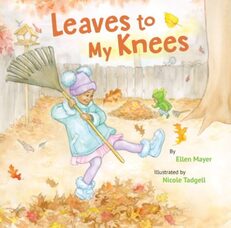 The Math Makes Sense Leaves to My Knees is a playful STEM story about a little girl, Camille, who is determined to rake a pile of leaves all the way up to her knees to jump in. In the story I wanted to demonstrate how young children, before they use formal units of measurement like a ruler, measure by comparing sizes with their own bodies in everyday activities. Elise at age three-and-a-half helped me “test out” the use of the math ideas on measurement and comparing sizes in my polished draft. As we raked leaves together in the backyard, I slipped in story character Camille’s mathematical thinking. How about raking a pile all the way up to your knees? I asked. The prospect not only delighted Elise, but the thinking felt true and natural to her, and soon she was chatting about the progress of the pile up her legs, just like story character Camille. She was also interested in comparing the size of her little toy rake against the big grown-up rake of her grandfather. For this young child, the math in the story made sense. Clarification Is Needed In the fall of 2019, I submitted the manuscript to the publisher. After I signed a contract for the book in the spring of 2020, Elise began to help me with revisions. While zoom readings during the beginning of the pandemic meant the loss of the lap, this technology did afford me a clear view of Elise’s four-year-old face, and I was able to make note of her expressions and body language as I read the text to her. Before the reading, I said: Elise, there are no pictures yet. You’ll just have to imagine them for now. But I’ll read you the words. She listened intently as I read through the entire text. What do you think? I asked. GOOD! she proclaimed. Even without the art, the story kept her attention – and elicited smiles. But I noticed one point where Elise furrowed her brows. When Camille sets out to rake leaves all the way up to her knees, she hoists her rake up onto her shoulder and does so “Because I mean business.” Elise was clearly drawing a blank at the idiom. Is “I mean business” kind of confusing? Should I change that a bit? I asked. Yeah. How about if I say: “Because I am serious––I mean business!” That’s good, she said. Of all the idioms in the story, that one needed a little explication for this four-year-old. Reconsider a Character Months later, a PDF arrived from publisher Star Bright Books with illustrator Nicole Tadgell’s full-color art in it. After reading it aloud to Elise, my beta listener paused thoughtfully and asked: You know, Mimi, Jayden doesn’t say anything. How come? That gave me pause. She found it odd that the goofy and playful two-year-old brother Jayden didn’t say anything. I never deliberately intended for him to be silent. Hmmmm. My publisher was getting the files ready for the printer, but I had to email the editorial team. If it's not too late, I have a suggestion for one more text edit. This suggestion is prompted by a comment made by my granddaughter when I read her the story recently. She pointed out – with some concern – that Jayden doesn't say anything in the story. I suggested that we have Jayden join in with Daddy when he cheers Camille on with a GO! as she readies herself to jump into her leaf pile, now up to her knees. Star Bright Books concurred. One of the editors wrote back: It’s always fascinating to learn what children can see that adults don’t. Thank you, Elise, now Jayden has his own “voice.” 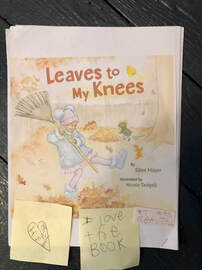 A Starred Review I learned that the reception of the story only improved with repeated readings. I watched my granddaughter sitting on the sofa beside her grandfather as he read aloud from the pages of the PDF, her face passing through a wide range of emotions as Camille suffers ups and downs in her leaf-raking project. When they got to the page where Camille steps into her hard-earned knee-high leaf pile, confirming that it indeed reaches to her knees, and shouts “TA-DA!”, Elise sprang up on the sofa and raised her hands high above her head in victory, just like Camille, and shouted joyfully: TA-DA! Months later, she insisted that she had “requested” that Camille say “TA-DA” back in the editorial stage. But then, that’s what happens in collaboration, isn’t it? We often forget who contributed what. When she was six years old and a rising first grader, Elise wrote out her review. To help her elaborate on her stickies, I said I wanted to “interview” her about each page. With much eagerness and solemnity, she pulled up a chair next to mine. As we slowly examined each page I asked her what she thought and she provided detailed feedback. She loved what the kids were wearing (it’s a Stegosaurus hood on Jayden), Jayden was so funny, her favorite image was the cover because Camille looks so happy. Elise identified with Camille, and she thought her peers would, too. They would understand how Camille feels and they’d feel the same way in that situation. Like, it’s a good book because it’s kind of like you’d be if you were Camille… I think the kids in my kindergarten class would’ve liked the book because it’s like them. 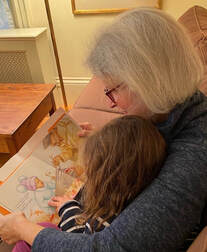 Ready to Read Soon after Elise started first grade, I had a surprise for her. It was the “F&G”, the folded and gathered advance pages of the book, before it was bound. It was a glossy splash of fall color, all ready to read, with real pages to turn. She was the person I most wanted to share it with. I jumped right in and started reading. After several pages, she put her hand over mine. She had a surprise for me, too. STOP, MIMI! she said. Let me read. I’ll read this page. Since I couldn’t see very well through my tears, I let her take over. The book had come far in those last three years. And so had Elise. Lessons Learned From a Young Beta-Reader Quite apart from the joy our journey together afforded me, getting reactions from a real child helped my writing process:
Each child and each book process is unique. For myself in this case, I came away with some thoughts about how to incorporate a young child into the making of a picture book:
You will never sell a book by claiming that your grandchild loves it, but working with a young reader in your family to critically evaluate your manuscript can make it stronger and help it find publishing success. I hope the collaboration I enjoyed with my granddaughter, as I worked on Leaves to my Knees, makes you think about using your own young beta-reader to improve your work. Leaves to My Knees, illustrated by Nicole Tadgell, and published by Star Bright Books in October 2022, is Ellen Mayer’s ninth book for children and her third math-infused one. Before focusing on writing for children, Ellen was an education researcher at Harvard’s Graduate School of Education, studying family engagement in young children’s learning, and an early literacy specialist home visitor with the Cambridge Public Schools in Massachusetts. To learn more about Ellen and her various books for children, visit her website at www.ellenmayerbooks.com. To learn more about illustrator Nicole Tadgell visit her website at http://nicoletadgell.art/. 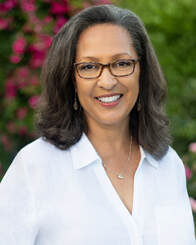 ~Guest blog by Janet Costa Bates I call myself a writer, but I’m not sure why. I should call myself a ‘reviser,’ since, like most writers, I spend much more time revising manuscripts than I do writing the first draft. Writing the first draft is exciting, but the real magic happens during the revision process. My first step in the revision process is to do absolutely nothing. I figuratively put the manuscript into a drawer and then work on something else. When it’s time to look back at it, I can do so with fresh eyes. Are there plot holes and how can they best be fixed? Are the characters true and consistent? If not, does something happen in the story to drive the change in their behavior? Is there fluff to be cut? Cuts can be as small as individual words or as big as characters, sub-plots, or description. I often pick a random number and make myself cut that number of words from a manuscript. There’s safety in knowing I can put any of the words back in, but I rarely do. I also go through the manuscript for grammar - NOT my favorite part. After all, my rule for commas is ‘random.’ Although I try to get the manuscript into decent shape, I’ve learned not to obsess too much. I now know there are magical people called copy editors who have much more grammatical talent than I do. Some revisions are routine and fairly quick. Other revisions are not at all routine, not at all quick, but totally worth it. Let me share a few examples with you. 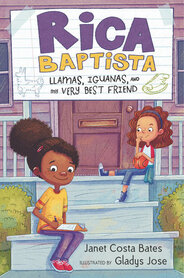 Years ago, I started a manuscript as a picture book, but eventually realized, not only was it too long, it didn't have the visuals a picture book required. After revising, I tried it as a magazine story. It received some interest from a major children’s magazine but, even though I’m pretty good at accepting editorial suggestions, I couldn’t quite wrap my head around some of the changes they were requesting. At a retreat, someone suggested it would be better as a middle grade, so I stretched it into a novel. With that story, I got an agent. My agent spent years - yes, years - trying to sell it. The phrase ‘raving rejections’ started to make sense to me. Editors gushed over the characters, expressed their love for the voice, but ultimately, they all said no to the story. At a Whispering Pines Retreat, I had a critique with Christian Trimmer, then a Simon and Schuster editor. Similar to the others who had rejected the manuscript, he said the story had great characters, great voice, but the plot wasn’t working. He followed that up with ‘but you have a great set-up for a chapter book series.’ My then agent still wanted to try it as a middle grade, but eventually, after a friendly parting of the ways with that agent, I went with Christian’s advice. LLAMAS, IGUANAS, AND MY VERY BEST FRIEND, illustrated by Gladys Jose, is the first in the Rica Baptista chapter book series. It will be released by Candlewick Press on October 25 and is a Junior Library Guild Gold Standard Selection. I’m looking forward to its November 9th launch at An Unlikely Story. 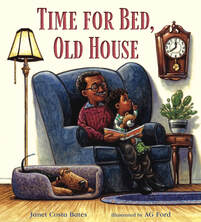 A process that took even longer was a picture book manuscript I started in 1999. I went to my first NESCBWI Conference, met an editor, and submitted the manuscript. She gently turned it down with a helpful note explaining why. That was the first of many rejections it received. I spent a few more years revising it. Again. And again. More rejections. Finally, I put it in a drawer – for about ten years. (I don’t recommend putting a manuscript in a drawer for ten years, but, well, sometimes life happens and you don’t get a chance to open up that drawer for a while.) Eventually, I took that manuscript out, greatly revised it, and sent it to Andrea Tompa of Candlewick, whom I had met with at a conference. She said yes! TIME FOR BED, OLD HOUSE, illustrated by AG Ford, was released in 2021 and has received several honors. It was well worth the wait and the revisions. (Side note: That first editor to whom I sent a very early version of TIME FOR BED, OLD HOUSE, was Mary Lee Donovan of Candlewick. As Andrea’s boss, she gave her the nod to acquire it. Publishing is a small world, my friends.) So, look at your manuscript with fresh eyes. Find the plot holes, strengthen the characters, and cut the fluff. Putting time and effort into your revisions will make the magic happen. 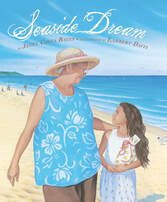 Bio Janet Costa Bates is the author of LLAMAS, IGUANAS, AND MY VERY BEST FRIEND (Candlewick), the first book in the Rica Baptista chapter book series and a Junior Library Guild selection. TIME FOR BED, OLD HOUSE (Candlewick), received four starred reviews, was listed on several 2021 best books lists, and was an NAACP Image Award nominee. SEASIDE DREAM (Lee and Low), received a Lee and Low New Voices Honor Award. Find her at janetcostabates.com or on Twitter/IG @jcostabates. 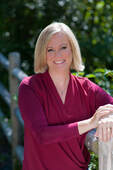 Guest Blog by Nancy Tandon Nancy Tandon launched two middle grade novels, including her debut, in 2022. 24 Carrot Writing is excited to have Nancy guest blog for us today. She is sharing the details behind the creative events she hosted and how she pulled off two very different book launches. Welcome Nancy! 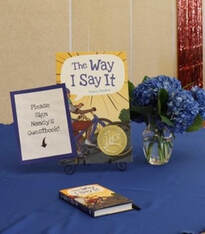 Speaking at an NESCBWI conference years ago, Jarrett Krosoczka imparted this sage advice to the gathered kidlit writers: “You get one book launch.” He was talking about the fact that your first book launch usually ends up looking very much like an episode of “This Is Your Life,” with friends and family turning out in large numbers to support the culmination of your hard work. My takeaway was: enjoy the heck out of it, and don’t expect to get the same reaction with subsequent launches. That day in the audience, I never imagined that I’d be launching two debut middle grade novels in one year! Like many aspiring authors, I’d been dreaming for a long time about hosting my own book event. But when things became real, I felt a bit overwhelmed about the particulars such as location and what the heck I was actually supposed to do and say if people showed up. Spoiler alert: they did! And people are going to show up for you, too. So, here are a few tips to consider when you are headed into your own countdown. My first novel, THE WAY I SAY IT, arrived on the scene in January 2022. Because the threat of Covid spread was still high, I knew I’d have to get creative with both the location and ways for people to access the event. I wanted attendees to feel safe, but I also desperately wanted to celebrate this long-delayed moment. My local indie bookstore (River Bend Bookshop in Glastonbury, CT) is an amazing but very small space. A winter event in an adorable house-sized bookstore was not going to work.
or example, since you may have folks that cannot attend in person, consider asking the bookstore if they can add a virtual component to your launch. That way you'll be sure even Aunt Sally in Idaho can be there for your big moment. For my hybrid launch, River Bend staff were key in setting up a way for guests to join the event virtually. They created an Eventbrite link, handled the registrations, and on the day of the launch ran all the tech for me. All I had to do was remember to turn to the webcam and smile! And even if technology is not a terrifying black hole for you, let the bookstore staff (or some other competent friend) take the lead on any virtual/high-tech components. That way you can concentrate on being fabulous! If for any reason your local bookstore’s space isn’t the best setting for you, don’t be afraid to speak to them about partnering at a different venue. Maybe a park, ballfield or a community center would better fit the mood of your book and be more appealing to your launch audience. Libraries are another great (and low-cost) idea, and you may pick up audience members just by centering your event in a book-loving space. Get creative! But do also think about logistics such as bathrooms, acoustics, and seating. Remember, you are hosting guests. For people showing up in-person at my January launch, I wanted to make leaving their homes on a cold winter day worth it. I had snacks (individually packaged), games, prizes, and a photo booth. Games and prizes were themed to scenes from the book (such as a magnetic dart board because that’s what the main character plays during speech therapy and a “Guess how many M & M’s jar” because those are another character’s favorite candy). I enlisted members of my book club and critique group to run the activity stations for me. Everyone was so helpful! I really could not have done it without them. I recommend you earmark a book launch “maid of honor” who knows how you want things to run. And, of course, thank all your assistants with cards and/or small gifts afterward. In the end, I signed a ton of books, enjoyed friends and family, and truly felt like the book had a proper birthday celebration.
Again, I relied on local bookstore staff to help with book ordering and sales, and this time used the nearby library’s gorgeous event space. I spread the word to the middle grade-minded audience in the area through my family and friend connections. I like to think of a launch from a guest’s point of view, striving to make it more about them and their experience than about selling books. You will want to practice (and time) your presentation, making sure to keep the pace clicking along. I began by thanking my hosts and particular audience members, then read an excerpt from chapter one. After that, we played “Ghost-story Mad Libs” as a group, which was a huge hit. I would encourage you to think of an all-play game you can offer your launch crowd. This gets the audience involved and having fun. Next was another brief reading where I let the audience in on a “family secret” which had made it into the book. Afterwards, many people told me that learning "insider information" was one of their favorite parts. You may want to share or at least hint at some of the hidden gems in your novel as an exclusive treat for the people who came to your event. Finally, I showed examples of the crafts we’d set up at the back of the room and pointed out where I’d be sitting to sign books. This time, family members helped me run my activity stations, which included making ghost bookmarks, building cairn photo holders, and decorating cookies. That evening, I got to have the “post-launch” party I had to forgo with the first book. The most exciting thing was that we were able to host a dinner at the exact inn that the book’s fictional Home Away Inn is based on. Afterwards, we had a bonfire and told ghost stories. It was a magical, fantastical day. Writers, your book will have its own life and celebrations in the weeks and months (and hopefully decades!) to follow the launch. That day is for you to celebrate and share. So, gather the people you love, in a place you love, and do things that will be fun for everyone. I wish you an exciting launch and wonderful memories for years to come!
~ Having an agent isn’t everything Soft Watch at the Moment of First Explosion by Salvador Dali. Soft Watch at the Moment of First Explosion by Salvador Dali. ~ Guest blog by Samantha Gassman In January 2020, I was flying high. After 5 months of querying literary agents with my picture book manuscripts, I had an offer of representation in hand and my first book on submission with publishers. But as the months dragged on, it became clear that my hope of seeing my book in print was not going to happen. During the course of 12 months, my first manuscript was rejected by 30 publishing houses — big ones, small ones and everything in between. Here’s what I learned: 1. Rejection doesn’t stop after you have an agent When I received my first offer of representation, I was equal parts thrilled and relieved. I was ready to be out of the query trenches and into the big time! Instead, I traded in the “your work isn’t the right fit for me” rejections from agents for “It’s cute but I’m afraid it didn’t quite capture my attention as I was hoping. I’m afraid I’m going to have to pass” rejections from editors. Ouch! Not only do the rejections continue after landing an agent, publisher rejections sting even more. When I was querying agents, I convinced myself it was “just to see what would happen.” Like a schoolchild picking daisy petals: maybe they’d like me, maybe they wouldn’t. But when a publisher rejects your work, they’re saying it’s not worth their time or money to publish your story. On that note... 2. Acquiring a book is a risk When a publisher acquires a book, particularly a picture book, the publisher is taking a huge risk on your book’s ability to compete and perform in an over-crowded marketplace. During the acquisition process, there will be a Profit and Loss (P&L) analysis performed by the editor or financial specialist. After all, publishing is a business, not a charity. While writing for children is often portrayed as a whimsical process, if your cute story isn’t worth the manufacturing, design or overhead costs, a publisher will pass. In my case, the feedback from several editors was exactly that: “The energy is great, but the story doesn’t hit high enough to compete in the market right now.” 3. Agents have a really tough job Agents get paid when the author gets paid. In other words, after your book is acquired, contracts are signed, advances are paid (or not) and royalties come in. Because publishing is such a slow industry, this means your poor agent doesn’t see any cash for 1–3 years AFTER they sell your book. They weren’t paid to read your query, offer their revisions, or go back and forth with you on edits. They do all of that in hopes that your book will be acquired by a publisher and fly off the shelves. Even then, most agent commissions are only 15–20%. On a $17 hardcover book, that’s only a few bucks. I will be forever grateful to my first literary agent for her perseverance and patience as we received rejection after rejection. Especially since our agreement was based on her representing this one manuscript, and she had all her figurative eggs in my one basket. 4. Taking a critical eye to your work is important If you remember nothing else from this post, remember this: Read your manuscript like a publisher. Regardless of what kind of book you’ve written, you must be well- read enough in your genre, age group, etc. to know where your book fits into the market. What is unique about your book? Why does there need to be another book on your topic? What value does it provide the reader? After the doors to my publishing dreams were closed for this manuscript, I re-read it with the editors’ comments in mind. You know what I found? They were right. ARTICHOKIE KARAOKE (great title, right?) is a really cute book. The rhyme style is catchy (similar to Hip Hop Lollipop) and kids would appreciate the premise of being stuck in a boring grocery store with nothing to do. But, as the 30 editors noted in their own way, it is too “slice of life.” The conflict and resolution are too tame, and without the rhyme, the story falls flat. Maybe if I had considered these things before, I could have revised it to be more compelling. Upped the stakes. Increased the friction. Landed the deal. Take a look at your story as objectively as possible and ask yourself those tough questions before it goes on submission. If you know in your heart it could be better, make it better. There is no need to rush. Seriously. Don’t rush it.  5. Keep trying Although my first attempt at being a published author didn't work out, I tried again with another agent in 2020. Just before my rainbow baby was born, my new agent and I received an offer of publication for my picture book, DEAR RAINBOW BABY. It comes out on National Rainbow Baby Day – August 22, 2022, courtesy of Clear Fork Publishing. P.S. It’s also my rainbow baby’s second birthday that day – how perfect is that!? After my first book was rejected by 30 publishers, I felt completely deflated. The contract with my first agent was terminated and even though there are still a handful of publishers who never responded, ARTICHOKIE KARAOKE will likely never be traditionally published. At least, not in its original form. Knowing what I know now, I may dust it off one day and revise it, and try again. Or maybe, elements of the story will find their way into a completely new piece. Or maybe, I’ll borrow the rhyme scheme to write a new story. It doesn’t matter — the point is, we learn more from our failures than our successes. Don’t give up!  Samantha Gassman is a children's book author, Air Force veteran, military spouse, and mom to two kids and two cats. She is the author of DEAR RAINBOW BABY (Aug 22, 2022) and PEANUT AND BUTTER CUP (2024). Visit Samantha’s website to learn more. Preorder DEAR RAINBOW BABY here.  Guest blog by Elisa Boxer First of all, I’m delighted to be here! 24 Carrot Writing has felt like a friend from the very beginning. It was the first blog I turned to for insight, inspiration and community when I was pre-published, fielding rejections (that one hasn’t changed), and wondering whether my words would ever become books. With two picture books in the wild, three on the way this year, and three more under contract, I’m here to tell you to keep at it, and keep the faith! In this busy year of launches, writing, and revising, I’ve had to be extra diligent about organizing, prioritizing and protecting my writing time. And while I wasn’t completely aware of any concrete process I’d been using to do that, thinking about a topic for this blog post has actually helped clarify a three-pronged method that I have been loosely following, that I will now follow even more specifically, and that I am happy to be able to share! I’ve broken it down into three questions: 1. What wants to be worked on? 2. What time can I carve out for it? 3. What intention do I have for it? What wants to be worked on? I’ve phrased that in the dreaded passive voice for a reason. To me, each project has its own feel; its own energy. Like a living thing. And it’s our job to tap into that energy. Try this: Think of one of your works in progress. Really focus on it. How do you feel about it mentally? Emotionally? Do you feel a sense of possibility? A spark? A readiness to connect with it and move it forward, even in some small way? Or do you feel resistance, like this one might be better put aside for the time being so you can work on something else? Now how do you feel physically? I measure this by a sense of expansion and contraction in my solar plexus. When you think of this project, do you feel lightness and openness (this is the one!), or tightness and constriction (maybe not this one right now). I go through each project and assess each one, paying attention to these feelings. Kind of like I’m opening the door to check on them. This all goes out the window, of course, if I’m meeting a deadline. Then I just have to plow through any resistance. But for example, I’m writing this blog post two weeks before it’s due, because I woke up and felt that niggle of “write meeee!” even though I had planned to work on something else this morning. What time can I carve out for it? This is a helpful re-frame for questions like: What do I have time for? and Where can I slot this in? The truth is, we’re all so busy and have so much going on, the only writing time we get is the time we proactively carve out for it. Writing time, in my experience, doesn’t ever present itself. It has to be actively dug out of a busy schedule. So, each week and each night, I will look ahead and pen in blocks of space for works in progress. Some days it’s only a 15-minute block for a writing sprint in between calls, meetings and appointments. Other days it’s a 2-3-hour block for deep work. But if I don’t commit to carving out time in advance, specifically for writing, other things will move in and take over that space. What intention do I have for it? Once I’ve identified the project that’s calling out for progress, I set an intention for it. Sometimes that intention is a short writing sprint where I set a timer, close all open tabs, turn off all notifications, and write nonstop, as much as I can, in the allotted minutes. Examples of other intentions include: Writing a thousand words, brainstorming titles, doing a revision, coming up with a more detailed secondary character, or putting together a bibliography. Some days my intentions are things like securing photo permissions, organizing my research files, or lining up interviews with sources. The key to setting intentions, for me, is to make sure they’re do-able. Kind of like writing items on a to-do list that you know you can complete. If something is more of a stretch, I consider that a goal, rather than an intention. Goals are great too, but intentions, to me, are more manageable day-to-day. I am sending you so much good energy for whichever project wants to be worked on, the amount of time you can carve out for it, and whatever intentions you decide to set for it! Elisa Boxer is an Emmy and Murrow award winning journalist whose work has been featured in publications including The New York Times, Fast Company and Inc. magazine. She has reported for newspapers, magazines and TV stations, and has a passion for telling stories about people finding the courage to create change. She is the author of The Voice That Won the Vote, A Seat at the Table, and the forthcoming One Turtle's Last Straw. Elisa lives in Maine, and she has several more picture books on the way. Visit her at https://www.elisaboxer.com/ .
Pre-Order Elisa's upcoming 2022 books, ONE TURTLE'S LAST STRAW coming in May, SPLASH! coming in July, and COVERED IN COLOR coming in August, at Print: A Bookstore and get pre-order bonuses like prints and stickers!  ~by Megan Litwin Hello! Thank you to 24 Carrot Writing for hosting me here as I share the cover of my debut picture book, Twinkle, Twinkle, Winter Night! I am absolutely over the moon about the cover art by Nneka Myers. I love the dreamy color palette, and the way Nneka captures the peaceful beauty of the winter world…yet with a hint of festive sparkle in the distance. I can’t wait for the rest of her brilliant work to be seen! And now that the cover is out, I’ve been thinking… It is ironic that a finished book cover is the result of months or years of work, because at the same time, it also represents a new beginning…the beginning of this last stretch until the book is out in the world. And the “Six-Month Stretch” (as I’ve begun calling it) brings new work to light. There is a lot of talk about all the things an author can do to promote a book pre-launch, and to be honest, it can be pretty overwhelming. So I’m taking the advice of veteran writer friends who have shared some wisdom about how to use this time. The underlying theme is “do what feels right to you.” I’m going to couple that with one of my own favorite mantras: “keep it simple.” And in the spirit of 24 Carrot Writing’s goal-setting mission, I have formed a plan. Here are the five main things I’m going to focus on in my “Six Month Stretch”:
Thank you, 24 Carrot readers and writers, for sharing this exciting moment with me! - Megan Shimmer, glimmer, glowing light.
Twinkle, twinkle, winter night. Celebrate winter with this magical twist on a beloved nursery rhyme that brings the shimmering season of lights to life. To learn more about Megan or to subscribe to her newsletter, visit her online at www.meganlitwinbooks.com. To learn more about Nneka Myers and her art, visit her online at www.nnekamyers.com.  “June Cotner's book proposals are the gold standard.” ~ Denise Marcil Marcil-O’Farrell Literary LLC ~ Guest blog by June Cotner If you’re a nonfiction writer who would like to have your book traditionally published, you will need a book proposal. In this post, I will be sharing ideas I have used to secure contracts with large publishers such as HarperCollins, Random House, and Hachette, as well as medium-size publishers such as Chronicle Books, Henry Holt, and Andrews McMeel Publishing. The most important principle is that your book proposal is a business plan prepared for the publisher to show them why your book will be successful. Here is a sample Table of Contents: 1. Overview 2. Description of the Book 3. Comp Books 4. Delivery Date 5. The Market (or The Audience) 6. Special Sales 7. Publicity 8. Sequels 9. About the Author 10. Sample Content A proposal may vary from 5-35 pages in length, plus sample content. You will create: 1. Overview More about this later. 2. Description of the Book This includes number of pages and perhaps a suggestion about the book package—trim size, hardcover or paper, and number of photos. 3. Analysis of Comp Books There are three types of comp titles: competitive, complimentary, and comparative. Also mention why your book will stand out from the competition. 4. Delivery Date When will you deliver the complete manuscript? 5. The Market that exists for this book Include statistics—if your book is about dogs, you can list the number of households in the U.S. who have dogs. 6. Special Sales This section lists places that sell books outside of a traditional bookstore, such as Paper Source, or a catalog such as Bas Bleu. Be very specific and selective about your suggestions. You should be clear about your rationale why various special sales markets will have an interest in your book. Perhaps your children’s book is about art museums, so you should include a link of all art museums in the U.S. If you think it’s perfect for The Land of Nod and Pottery Barn for Kids, go online and see if they sell your type of book. If so, list the chain’s online books link in your proposal. 7. Publicity I often call this section “Author’s Promotional Contribution,” so it’s clear to the publisher what I will undertake to make the book successful. In this section, I list traditional media (print, TV, radio) and blogs in which I’ve been featured. I include all of my social media links and the number of friends or followers for each one. 8. Sequels If you have a sequel or series idea, list it. 9. About the Author Write in third person. List why you’re an expert on this subject, along with any major book sales and awards. 10. Sample Content List all of your chapter titles and give a succinct description of each—no more than 3-5 sentences. After that, insert your first chapter. For your second sample, use a chapter that demonstrates why your book is a unique contribution to the marketplace. My favorite book about writing book proposals is How to Write a Book Proposal: The Insider’s Guide to Proposals that Get You Published, © 2017 by Jody Rein with Michael Larsen. The rest of my post is devoted to something new I’ve developed. I use the first page after the Table of Contents to present one page that will serve a dual purpose: First, I want to give the publisher a succinct overview of the book, why the market is perfect for it now, and why my target audience will be eager to read the book. Secondly, I make the first paragraph bold and I write it like a book description that would appear on Amazon. Here is the first page from the proposal for BLESS THE EARTH, coauthored with Nancy Tupper Ling. It resulted in a contract from Convergent/Penguin Random House. BLESS THE EARTH Overview and Description Bless the Earth: A Children’s Book of Prayers and Poems for Honoring the Earth celebrates the miracle of our planet Earth and offers a spiritual dimension of caring for our world through universal prayers of gratitude and earth-related inspirational poems. Bless the Earth is the only children’s anthology for 4–8-year-olds that knits together humanity, the environment, and spirituality in an engaging way that is simple for young readers to understand. Moreover, nine-in-ten Americans believe in a “higher power” (Pew Center). Bless the Earth will be a welcome addition for 90% of families. We live in an age in which 17-year-old climate activist Greta Thunberg received TIME’s 2019 Person of the Year award. Climate change and environmental awareness are at the forefront of topics that parents and teachers discuss with children. While no one wants to alarm young readers, a book like Bless the Earth fosters an awakened appreciation for the world around them. In support of these developing environmental efforts, Bless the Earth shows the importance of caring for our world, treating our neighbors—humans, plants, and animals alike—with respect, and imagining a positive future. While many contemporary children’s books focus on “being green,” Bless the Earth introduces a spiritual dimension not featured in comparative books. The book is compiled by bestselling anthologist June Cotner, whose books have sold more than one million copies, and multiple-award winning author Nancy Tupper Ling, whose children’s books have been published by major publishers. In Bless the Earth, writings from Karla Kuskin, Mary Oliver, Theodore Roethke, Emily Dickinson, Lao Tzu, Paramahansa Yogananda, and Kahlil Gibran intermingle with voices of celebrated poets such as Charles Ghigna, Patti Tana, Janine Canan, and Barbara Crooker. Bless the Earth will contain approximately 60 selections divided into five chapters below.
There is no one right way to write a book proposal. Do make sure you have shown the publisher why they should invest their money in publishing your book. 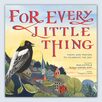 Bio: June Cotner is the author of 38 books including the bestselling books, Graces, Bedside Prayers, Wedding Blessings, and House Blessings. Her books have been published by both major houses and mid-size publishers. Collectively, her books have sold more than one million copies and have been featured in many national publications. To find out more about June and for helpful publishing tips, visit her website at www.junecotner.com. You can also find her at https://www.facebook.com/June.Cotner.Books and on Instagram (@junecotner) where she posts sections from her book proposals. 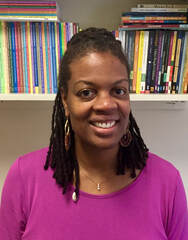 Guest Blog by Valerie Bolling My husband and I set goals every year, as individuals and as a couple. In 2017, one of my goals was to explore the possibility of writing picture books. It wasn’t a SMART goal (more about that later), but it still propelled me forward. That year I reached out to people I thought might be helpful to me in my “exploration.” I went to libraries and bookstores to do “research” – reading a myriad of children’s books and taking notes. I took a children’s writing class at Westport Writers Workshop where I now teach. I wrote and revised several stories. I even participated in a Twitter pitch, entered a contest, and sent out 16 query letters. Granted, that last sentence should be deleted. It was too early for me to take advantage of those opportunities and expect success. After all, I didn’t even have a critique group and hadn’t studied picture book structure and craft sufficiently. But I didn’t know that at the time. My goals have become SMARTer over the years. A SMART goal is Specific, Measurable, Accurate, Relevant, and Timely. Therefore, instead of my nebulous goal about exploring the picture book genre, I could have written a goal like: By March 31, I will read 100 picture books. In addition to creating goals that are SMART, goals should have other components that lead to achievement.  1. Think broadly about what you want long-term, and then break that down into a smaller goal. Example
2. Name the specific steps you’ll take to reach your goal. Example
3. Be accountable to yourself and to someone else. Example
 What’s most important is that your goals work for YOU. Here are some things to consider:
I have witnessed the power of setting goals. Not just setting them, but committing to them. That exploration goal in 2017 turned into the acquisition of my debut, LET’S DANCE!, in June 2018 and its release in March 2020. I’ve continued to set goals and, as a result, have two books releasing this year – TOGETHER WE RIDE (illus. Kaylani Juanita, Chronicle) in April and RIDE, ROLL, RUN (illus. Sabrena Khadija, Abrams) in October – and more on the way in 2023 and 2024. My goal for this year is to write a chapter book series. I’m currently revising my manuscript for the first book, which I plan to share with my agent in March. What do you hope to accomplish this year, and what goals will you set to get there? I wish you all the best as you turn your goals into successes.
 ~By Megan Litwin A former K-2 teacher, I’m a big fan of schedules and routines. I know how important it can be to have a structure to the day you can count on, yet one that also leaves room for organic detours. Schedules can be powerful - and comforting - for children and adults alike. Of course, life hasn’t made it easy to keep to any sort of schedule lately. But this January, I felt determined to start off on the right foot. 2022 brings with it my debut picture book, and I could not be more excited! At the same time, that means I’ve found myself with extra balls to juggle and new roads to navigate: a website, a wonderful co-marketing group, planning for events and school visits. All very good things indeed. But all NEW things, too. Now, besides time to write (to daydream, draft, revise, and more), I need a chunk of time just to keep up with being an “author.” No matter where any of us are on this journey, there is a certain amount of attention that needs to be paid to the business side of things. But how to make time for these different roles, without dropping any balls or feeling frazzled? I needed a comfortable routine I could count on. First, I thought about the time frame of my work day (something that looks different for everyone). My best work hours are absolutely when my kids are in school. Then, I thought about the flow. I knew I wanted to fiercely protect my writing time, no matter what got thrown my way each day. So actual butt-in-chair writing is the morning’s first work. I’ve committed to at least one hour a day for that. Or more! But setting a realistic minimum helps me stay true to that goal. If I’m in the groove and really deep into the work, that could stretch by hours – and I love when it can. Or I might write for just that hour and then do something else writing-related, like critiques. There is a certain amount of open-endedness built in. And a whole lot of morning coffee… No matter how it’s going, by the time lunch rolls around, it’s time to switch gears to author business. Choosing ONE focus per day helps, and that focus varies with deadlines and such. I might work on my newsletter, write reviews, or make pins on Canva (where I definitely can fall down the rabbit hole…). But when these tasks are not creeping into my writing/craft time, I actually enjoy them! After the writing and author work, I scheduled some reading time. Yes, I said “scheduled reading” – because it’s important to me, and my routine should reflect that. I might read a new pile of picture books, some poetry, or a beautifully crafted chapter book. My children get home around 2:30, so scheduling my reading to coincide with that allows me to model my commitment to reading AND encourages them to join me with their own books. Win-win! And finally, we all have many more roles and responsibilities other than writer/author/reader. I might have an appointment, get called to substitute teach, or have a sick child. And even on a perfectly organized work day, it is my role as Mom that is most important to me, and that one requires most of my attention once my kids are home. At that point, I tuck the work away and promise to return to it tomorrow, just like I would if I were leaving the classroom or office. Schedules work best when they are flexible structures. After an inspirational virtual webinar with Bethany Hegedus at the Writing Barn, where she talked about setting goals for each quarter of the year, I realized that maybe schedules could also be seasonal structures. I decided to call this a WINTER work schedule, and I already felt a lot less pressure to make it perfect. It may change when spring arrives, and then change again to fit the cadence of my summer days. But it suits me right now. It makes me feel full and warm – because I am making space for what matters to me, day in and day out, as this new year begins. And…it is an acronym!! Because, after all, I’m forever-at-heart a primary school teacher! A WARM Winter Work Schedule: Writer Author Reader Mom (*etc.) No time slots. No word counts. No pressure. These are simply the daily roles I want to spend time on, and in this order. What kind of an overarching structure works for YOU? What does your “winter writing season” look like? I hope it is warm and wonderful and full of whatever you need…right now.  Megan Litwin is a children's book author and regular contributor for 24 Carrot Writing. Her debut picture book TWINKLE, TWINKLE, WINTER NIGHT, illustrated by Nneka Myers (Clarion Books) will hit the shelves October 2022. To learn more about Megan visit her at www.meganlitwinbooks.com/. |
Peruse blogs for advice and tips from KidLit creatives.
Categories
All
Archives
April 2024
Click to set custom HTML
Click on the RSS Feed button above to receive notifications of new posts on this blog.
|
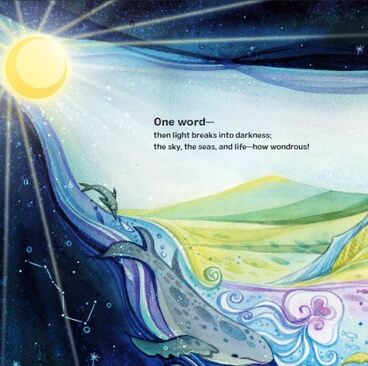
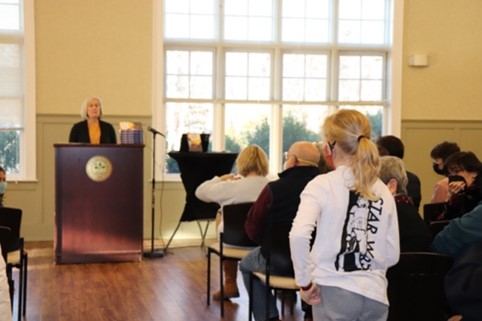
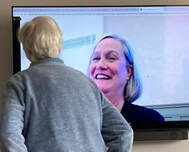
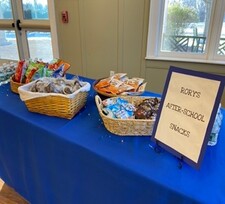
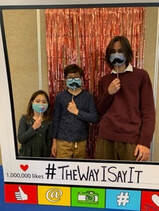
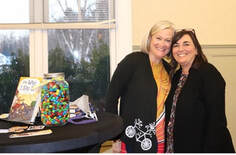
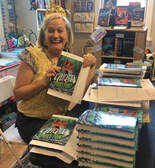
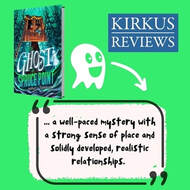

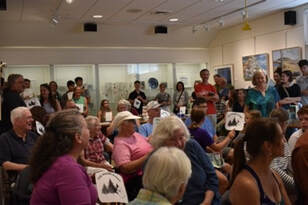
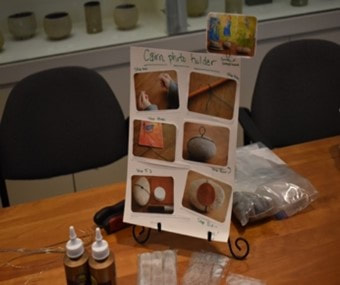
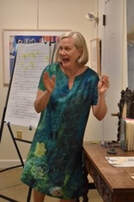
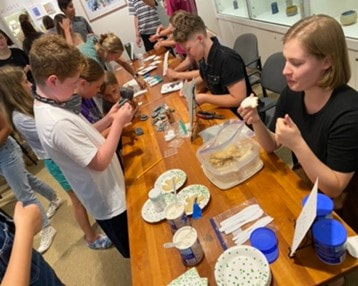

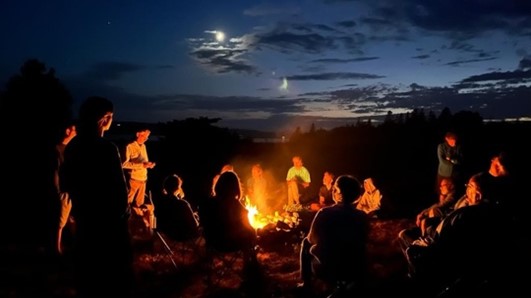

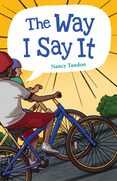
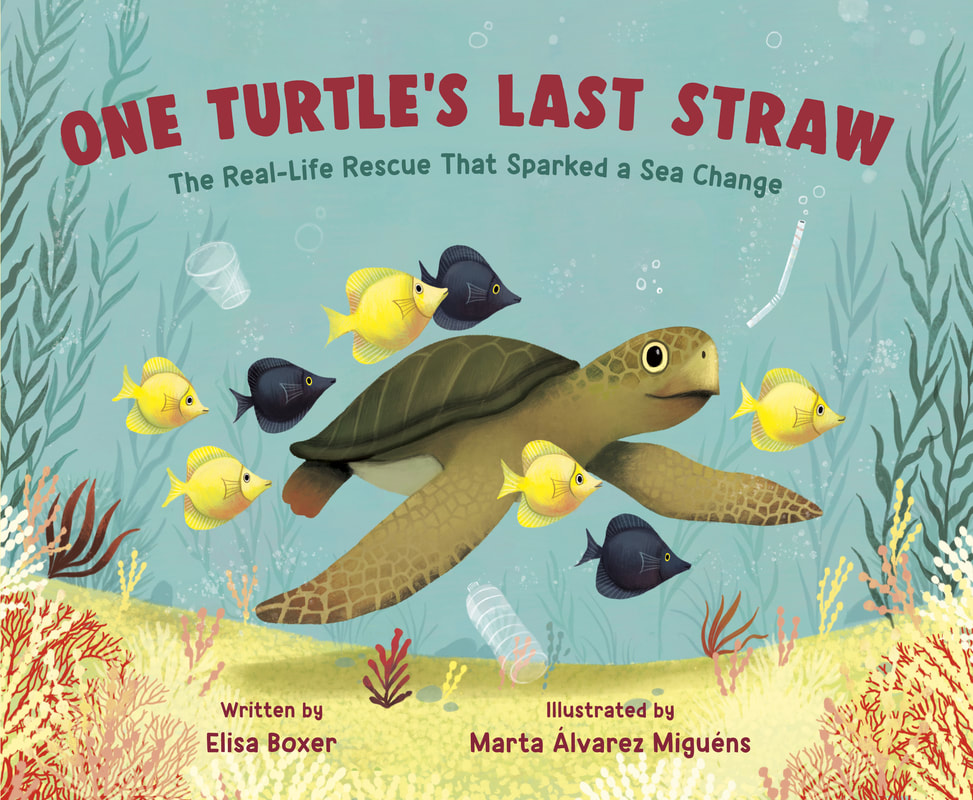
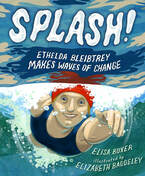
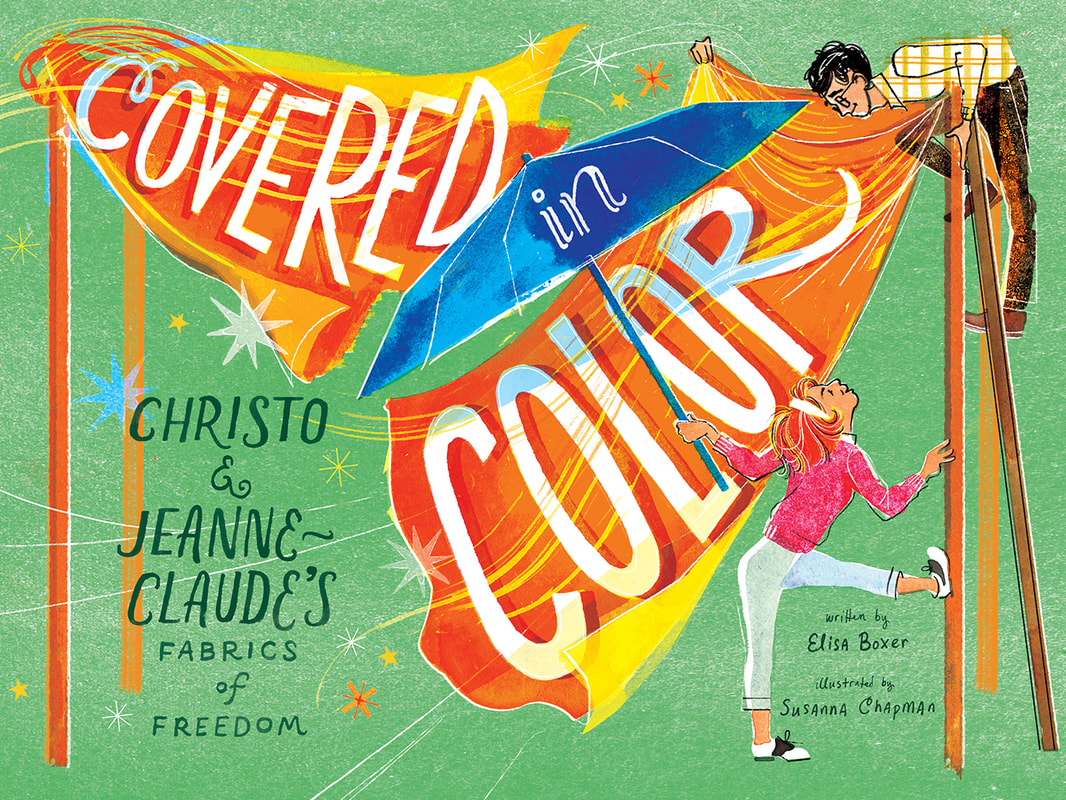
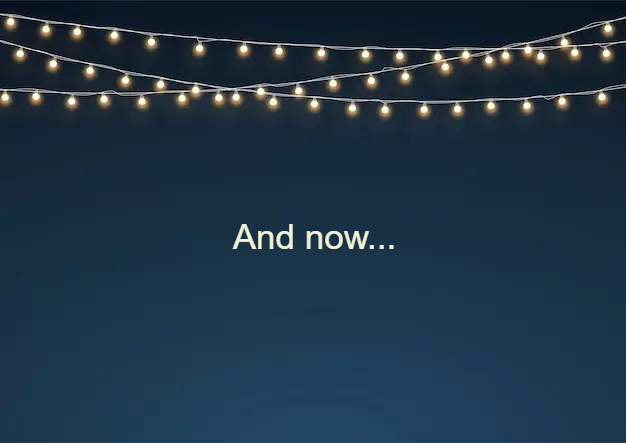
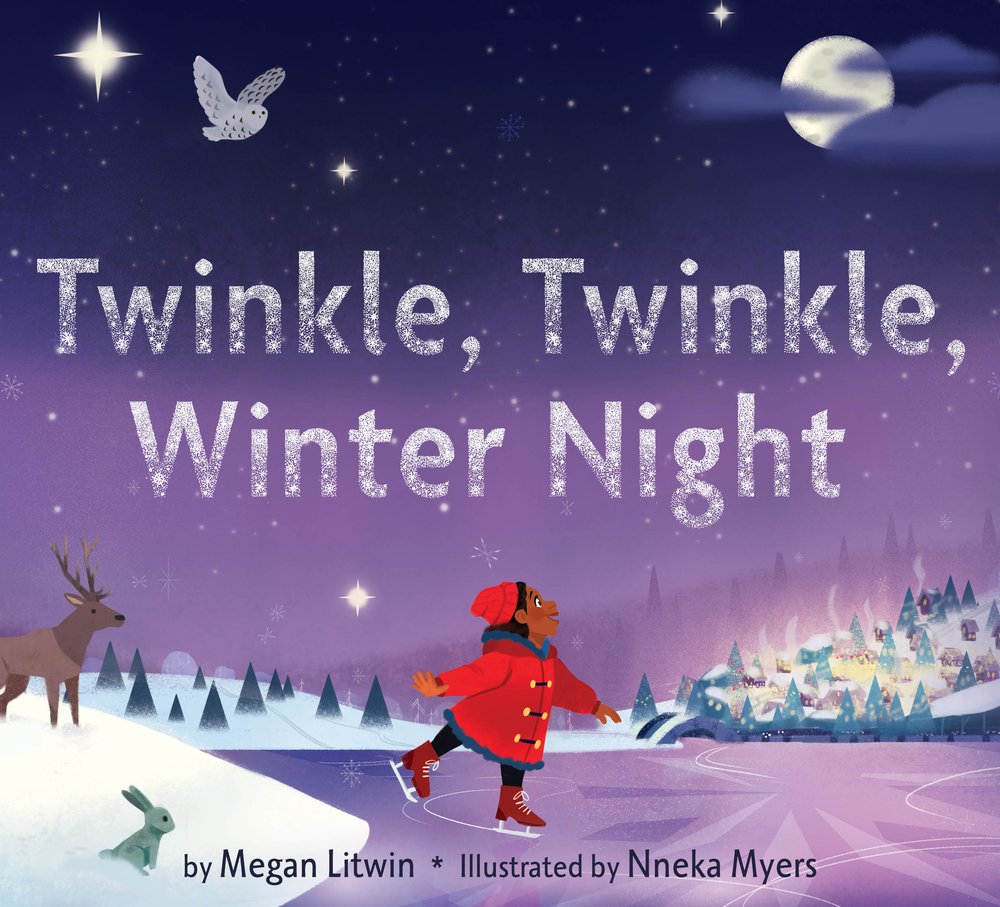
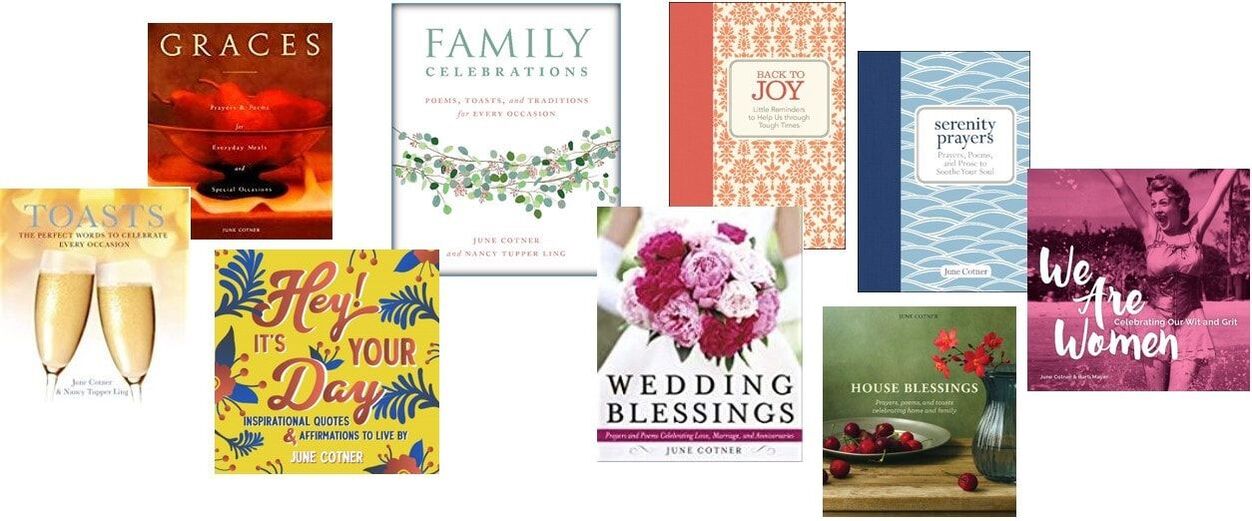
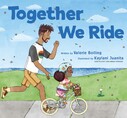
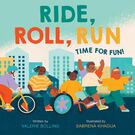
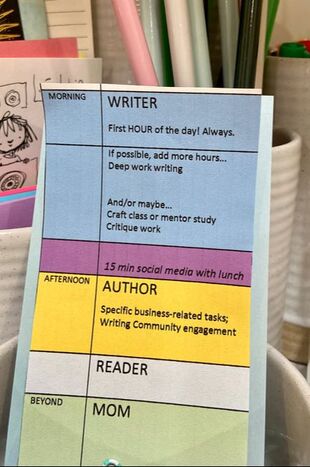
 RSS Feed
RSS Feed